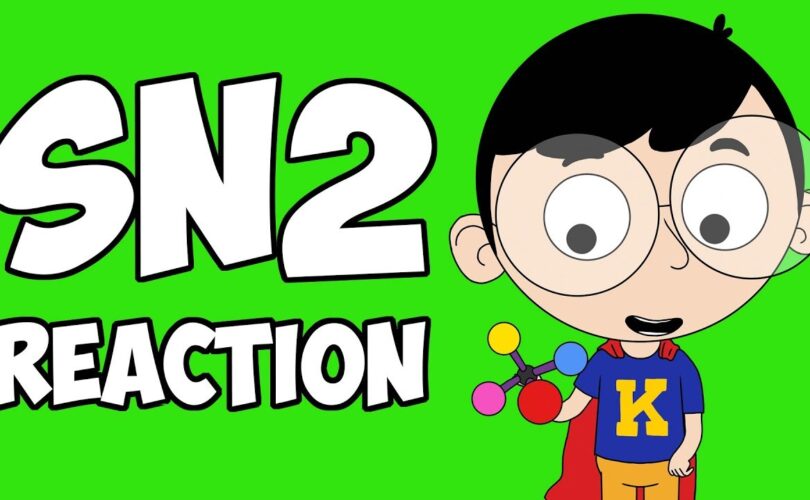Substrate
The substrate plays the most important part in determining the rate of the reaction. This is because the nucleophile attacks from the back of the substrate, thus breaking the carbon-leaving group bond and forming the carbon-nucleophile bond. Therefore, to maximize the rate of the SN2 reaction, the back of the substrate must be as unhindered as possible. Overall, this means that methyl and primary substrates react the fastest, followed by secondary substrates. Tertiary substrates do not participate in SN2 reactions, because of steric hindrance. Structures that can form highly stable cations by a simple loss of the leaving group, for example, as a resonance-stabilized carbocation, are especially likely to react via an SN1 pathway in competition with SN2.
Nucleophile
Like the substrate, steric hindrance affects the nucleophile’s strength. The methoxide anion, for example, is both a strong base and nucleophile because it is a methyl nucleophile, and is thus very much unhindered. tert-Butoxide, on the other hand, is a strong base, but a poor nucleophile, because of its three methyl groups hindering its approach to the carbon. Nucleophile strength is also affected by charge and electronegativity: nucleophilicity increases with an increasing negative charge and decreasing electronegativity. For example, OH− is a better nucleophile than water, and I− is a better nucleophile than Br− (in polar protic solvents). In a polar aprotic solvent, nucleophilicity increases up a column of the periodic table as there is no hydrogen bonding between the solvent and nucleophile; in this case nucleophilicity mirrors basicity. I− would therefore be a weaker nucleophile than Br− because it is a weaker base. Verdict – A strong/anionic nucleophile always favours SN2 manner of nucleophillic substitution.
Solvent
The solvent affects the rate of reaction because solvents may or may not surround a nucleophile, thus hindering or not hindering its approach to the carbon atom. Polar aprotic solvents, like tetrahydrofuran, are better solvents for this reaction than polar protic solvents because polar protic solvents will hydrogen bond to the nucleophile, hindering it from attacking the carbon with the leaving group. A polar aprotic solvent with low dielectric constant or a hindered dipole end will favour SN2 manner of nucleophilic substitution reaction. Examples: dimethylsulfoxide, dimethylformamide, acetone, etc.
Leaving group
The stability of the leaving group as an anion and the strength of its bond to the carbon atom both affect the rate of reaction. The more stable the conjugate base of the leaving group is, the more likely that it will take the two electrons of its bond to carbon during the reaction. Therefore, the weaker the leaving group is as a conjugate base, and thus the stronger its corresponding acid, the better the leaving group. Examples of good leaving groups are therefore the halides (except fluoride, due to its strong bond to the carbon atom) and tosylate, whereas HO− and H2N− are not.
Reaction kinetics
The rate of an SN2 reaction is second order, as the rate-determining step depends on the nucleophile concentration, [Nu−] as well as the concentration of substrate, [RX].
- r = k[RX][Nu−]
This is a key difference between the SN1 and SN2 mechanisms. In the SN1 reaction, the nucleophile attacks after the rate-limiting step is over, whereas in SN2 the nucleophile forces off the leaving group in the limiting step. In other words, the rate of SN1 reactions depend only on the concentration of the substrate while the SN2 reaction rate depends on the concentration of both the substrate and nucleophile
It has been shown that except in uncommon (but predictable cases) primary and secondary substrates go exclusively by the SN2 mechanism while tertiary substrates go via the SN1 reaction. There are two factors which complicate determining the mechanism of nucleophilic substitution reactions at secondary carbons:
1) Many reactions studied are solvolysis reactions where a solvent molecule–often an alcohol, is the nucleophile. While still a second-order reaction mechanistically, the reaction is kinetically first order as the concentration of the nucleophile–the solvent molecule, is effectively constant during the reaction. This type of reaction is often called a pseudo first-order reaction.
2) In reactions where the leaving group is also a good nucleophile–bromide, for instance, the leaving group can perform an SN2 reaction on a substrate molecule. If the substrate is chiral, this inverts the configuration of the substrate before solvolysis, leading to a racemized product–the product that would be expected from an SN1 mechanism. In the case of a bromide leaving group in alcoholic solvent Cowdrey et al. have shown that bromide can have an SN2 rate constant 100-250 times higher than the rate constant for ethanol. Thus, after only a few percent solvolyses of an enantiospecific substrate, it becomes racemic.
The examples in textbooks of secondary substrates going by the SN1 mechanism invariably involve the use of bromide (or other good nucleophiles) as the leaving group has confused the understanding of alkyl nucleophilic substitution reactions at secondary carbons for 80 years[3]. Work with the 2-adamantyl system (SN2 not possible) by Schleyer and co-workers, the use of azide (an excellent nucleophile but very poor leaving group) by Weiner and Sneen, the development of sulfonate leaving groups (non-nucleophilic good leaving groups), and the demonstration of significant experimental problems in the initial claim of an SN1 mechanism in the solvolysis of optically active 2-bromooctane by Hughes et al. have demonstrated conclusively that secondary substrates go exclusively (except in unusual but predictable cases) by the SN2 mechanism.







